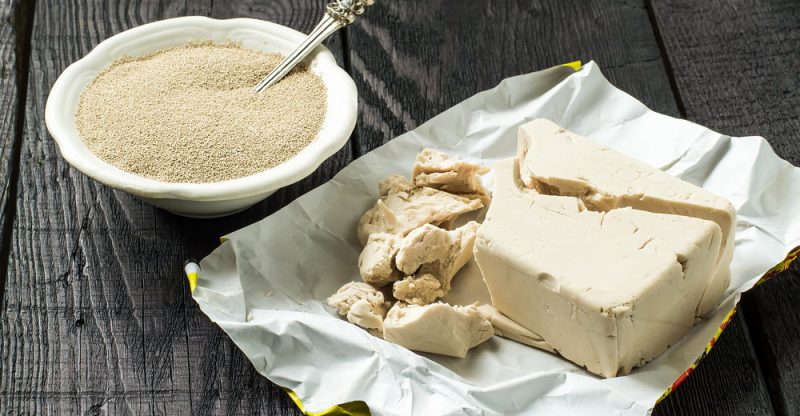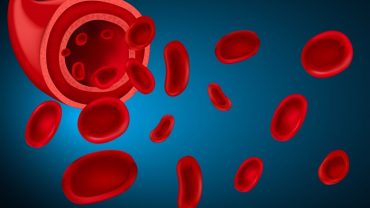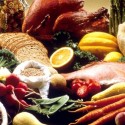7 Nutritional and Health Benefits of Yeast
This versatile food is perfect for your health! It’s a good source of B vitamins, which help to boost mood and energy levels. Plus, it can reduce blood sugar spikes after meals, so you have fewer cravings when eating.
Nutritional yeast, commonly known as savory yeast or nooch, is a form of yeast that is generated from sugarcane and beet molasses and is inactive. Saccharomyces cerevisiae, or sugar-eating fungus, is the scientific name for yeast cells that require sugar for energy.
Nutritional yeast, which is yellow in color and comes in flakes, granules, or a powder-like form, is often used as a condiment owing to its savory flavor and health advantages. In addition, it has a nutty, cheesy taste and is often used to replace cheese in vegan meals, thicken sauces and dressings, and provide a nutritional boost because of its high content of B vitamins.
Is nutritional yeast beneficial to your health? What makes it different from ordinary yeast? What’s more, why should you include this pantry essential to your grocery list? Here’s all you need to know about it.
What Is Nutritional Yeast?
Nutritional yeast is yeast that is cultivated on molasses made from cane and beets. The yeast is collected, cleansed, pasteurized, dried, and packed when the fermentation process is done. It comes in flakes, granules, or powder form and may be sprinkled on top of foods or added to soups and sauces to improve the flavor and texture.
This widely used chemical may be found all around the globe. It has been given numerous different names as a result of its unappealing name, including “nooch” (nüch) and “yeshi,” an Ethiopian name meaning “for a thousand.” It’s known as “savory yeast flakes” in Australia and “brufax” in New Zealand.
Nutritional yeast is well-known for its nutritional properties and for providing recipes with a cheesy taste. However, it really includes a broad number of minerals, including fiber, protein, B vitamins, zinc, and others.
Here are a few of the stages that go into bringing this nutritional powerhouse to your supermarket’s shelves:
- Seeding: Production starts with a pure Saccharomyces cerevisiae parent yeast culture. Typically, seed yeast is cultured in a sterile environment before being transferred to a container to be cultivated.
- Culture: It’s critical to keep the temperature and pH of the yeast under control throughout the cultivation phase to get the best possible results. The yeast is given a nutrient-rich and oxygen-rich medium.
- Harvesting: The fermented yeast slurry is processed through a procedure that concentrates the yeast cells once the growth phase is completed. Nutritional yeast cream is the off-white liquid that results.
- Pasteurizing: The cream is pasteurized, rendering the yeast inactive. At this time, fortification, such as the addition of vitamin B12, may occur, boosting the nutritional profile of the yeast.
- Drying: Like cornmeal, the yeast is dried and sized into flakes, powder, or granules.
Is nutritional yeast the same everywhere? When wandering the aisles of your local supermarket, you may discover that there are two unique varieties, each with significant nutritional distinctions.
Both fortified and unfortified kinds of nutritional yeast are available. Unfortified variants have just the vitamins and minerals found naturally in the yeast, while fortified varieties include added micronutrients during production.
Depending on your demands, the optimal nutritional yeast for you may differ. Vegans, for example, may benefit from a fortified version, which may give a variety of nutrients that are difficult to get via diet alone, such as vitamin B12. Others who just want to increase their protein or fiber intake may pick an unfortified kind.
What are the differences between other yeasts?
It’s vital to distinguish between nutritional yeast and brewer’s yeast. Brewer’s yeast is a byproduct of beer production that is utilized in bread baking. It has a sour flavor to it. While both belong to the Saccharomyces cerevisiae scientific family, the greatest distinction between brewer’s yeast and nutritional yeast is their nutritional content. Nutritional yeast outperforms brewer’s yeast and has considerably more B-complex vitamins than wheat germ and many other natural foods.
Meanwhile, baker’s yeast is a live yeast that is used to leaven bread and other baked items. Because nutritional yeast is deactivated and pasteurized during processing, it is inactive and will not have the same effects in recipes as baker’s yeast.
Nutritional Information
While nutritional yeast cannot replace full foods, it may assist offer much-needed vitamins, particularly to vegans and vegetarians who typically struggle to receive enough B vitamins in their diets. Nutritional yeast calories are minimal in each serving, but it is abundant in protein, vitamins, and minerals.
Nutritional yeast, in two tablespoons, includes approximately:
- Calorie Count: 45
- Carbs: 5 grams
- Protein content: 8 grams
- Fat: 0.5 grams
- Dietary Fiber: 4 grams
- Thiamine: 9.6 milligrams (640 percent DV)
- Riboflavin: 9.7 milligrams (570 percent DV)
- Vitamin B6: 9.6 milligrams (480 percent DV)
- Vitamin B12: 7.8 micrograms (130 percent DV)
- Folate: 240 micrograms (60 percent DV)
- Zinc: 3 milligrams (20 percent DV)
- Pantothenic acid: 1 milligram (10 percent DV)
- Magnesium: 24 milligrams (6 percent DV)
- Copper: 0.1 grams (6 percent DV)
- Manganese: 0.1 milligrams (6 percent DV)
- Iron: 0.4 milligrams (4 percent DV)
Keep in mind that this is a strengthened version of the original. Nutritional yeast that hasn’t been fortified is also available. For maximum health advantages, combining the two may be a smart option.
Health Advantages
1. It helps to keep your immune system in good shape
The components of beta-1,3 glucan, trehalose, mannan, and glutathione in nutritional yeast have all been linked to improved immune function. Animal studies have shown that these chemicals may help pigs avoid illness by preventing dangerous bacteria from sticking to the intestinal lining. According to a study published in Anticancer Research, Beta-glucan was also shown to be effective in the treatment of lymphoma in mice.
According to an article published in Nutrition Science News by Dr. Alan Christianson, N.D, Nutritional yeast delivers a considerable dosage of minerals, such as iron. This is particularly beneficial for athletes who exercise for more than four hours each week since it may help avoid anemia. In addition, selenium, which heals cell damage, and zinc, which assists in tissue regeneration, wound healing, and maintaining our sense of taste and smell, are also found in nutritional yeast.
2. Antiviral and antibacterial properties are present
According to Dr. Seymour Pomper, a yeast specialist, nutritional yeast is Germany’s fourth most recommended herbal mono-preparation due to its antiviral and antibacterial qualities. Only ginkgo Biloba, St. John’s wort, and horse chestnut are taken in greater quantities.
According to Pomper, nutritional yeast has shown to be one of the greatest therapies for persistent candida symptoms, a form of yeast infection, since it has not been linked to the Candida albicans strain linked to yeast infections. It has also been demonstrated to impact E.coli, salmonella, and staphylococcus significantly.
3. Helps with digestion
Nutritional yeast is recommended to treat diarrhea and lack of appetite in German monographs, and studies demonstrate that it is beneficial to the digestive tract. In addition, nutritional yeast probiotics have been demonstrated to have a favorable impact on diarrhea sufferers, and although further study is required, it may help with diarrhea therapy.
Furthermore, since it does not include any dairy ingredients, nutritional yeast benefits individuals who suffer from lactose intolerance symptoms. According to a study published in the journal Clinical Infectious Diseases, Saccharomyces cerevisiae expresses significant sucrase and some isomaltase activity but no lactase activity. It has been proposed to improve malabsorption in sucrase-isomaltase deficient patients who consume sucrose intentionally or unintentionally.
4. Protein-dense
Nutritional yeast is a complete protein that contains at least nine of the 18 amino acids that your body can’t make on its own. This is fantastic news for vegans and vegetarians who may struggle to acquire enough protein in their diet.
Nutritional yeast is a protein-rich diet that helps the whole body. Protein insufficiency may cause the following symptoms:
- Slow metabolism is a condition in which the body’s metabolism is s
- Having difficulty reducing weight
- Having trouble gaining muscle bulk
- Fatigue and a lack of energy
- Poor focus and learning difficulties
- Swings in mood
- Pain in the muscles, bones, and joints
- Changes in blood sugar levels
- Wounds heal slowly.
- Immune system dysfunction
When combined with a range of other protein-rich foods as part of a well-balanced diet, nutritional yeast may help you reach your daily protein requirements.
5. Encourages the growth of healthy hair, skin, and nails
Nutritional yeast is high in B vitamins, which are all beneficial to healthy hair, skin, and nails. For example, biotin has been demonstrated to help maintain healthy hair, skin, and nails. It also helps to reduce the appearance of indications of aging on the skin, such as redness and age spots. In addition, niacin, which is also contained in nutritional yeast, is often used to treat persistent acne and enhance skin health.
6. Encourages a healthy pregnancy
B vitamins, such as thiamine, riboflavin, vitamin B6, and folate, are abundant in nutritional yeast. These vitamins are essential for cell metabolism, mood management, nerve function, and other functions, and healthy pregnancy. For example, folate is an essential nutrient. It may aid in the prevention of birth abnormalities and the optimal growth and development of the fetus. During pregnancy, low folate levels have been linked to preterm birth, low birth weight, neural tube abnormalities, and growth retardation studies.
7. Vitamin B12-rich
Vitamin B12, a water-soluble vitamin required for DNA synthesis, red blood cell creation, and nervous system function, is one of nutritional yeast’s top advantages. Unfortunately, since vitamin B12 is only available in animal products and fortified diets, many vegans and vegetarians are in danger of insufficiency.
The amount of B12 in nutritional yeast varies, depending on whether it’s fortified or unfortified. On the other hand, supplementation with enriched nutritional yeast is an effective strategy to restore vitamin B12 levels in low people.
Recipes
Are you unsure where to get nutritional yeast and how to include it in your favorite recipes?
This superstar ingredient can be found in most major grocery shops and several internet vendors. Although many different variations are available, some of the most popular brands are Bragg nutritional yeast, Trader Joe’s nutritional yeast, and Red Star nutritional yeast.
Nutritional yeast flakes, which are most popular among vegans and vegetarians, are delightful, bringing excellent taste and nutrients without the excessive fat and calories associated with cheese. In addition, nutritional yeast is a great option for lactose-intolerant people since it may be sprinkled over spaghetti, salads, baked or mashed potatoes, soups, and even popcorn. You can even prepare a delectable nutritional yeast cheese sauce without the lactose, fat, or calories that traditional cheese has.
Side Effects and Risks
What are the negative consequences of using nutritional yeast? The risks of nutritional yeast are minor for most individuals, and it may be safely used as part of a healthy, well-balanced diet. Nutritional yeast is not only gluten-free and vegan-friendly, but it is also lactose-free, sugar-free, additive-free, and preservative-free.
If you have a yeast allergy, it’s better to avoid it entirely to avoid food allergy symptoms like hives, itching, swelling, and stomach ache. Nutritional yeast, on the other hand, is likely harmless if you have an allergy to the active yeast present in bread since it is pasteurized and deactivated during processing. However, like with any new meal, it’s usually recommended to start with a little quantity and gradually increase your intake to check your tolerance and avoid unpleasant side effects. In addition, if you have trouble metabolizing folic acid, you should limit your use of nutritional yeast and choose unfortified versions whenever feasible.
Another prevalent topic is whether or not nutritional yeast should be stored in the refrigerator. It does not need refrigeration, but it should be kept in the dark, cold, and dry environment to extend its shelf life. Although it may normally survive a year or two if stored properly, it’s vital to keep an eye on any changes in color, flavor, or smell to ensure it’s still edible before eating.
Last Thoughts
- Inactive yeast derived from sugarcane and beet molasses is known as nutritional yeast. It comes in flake, powder, and granule form and may be added to give your favorite recipes a cheese flavor or a thicker texture.
- The nutritional yeast nutrition facts vary greatly depending on whether it’s fortified or unfortunate. Fortified varieties are often rich in protein, fiber, B vitamins, and a variety of other vitamins and minerals.
- Improved immunity, better digestion, and better hair, skin, and nail health are just a few of the top nutritional yeast advantages. It’s also believed to contain antiviral and antibacterial qualities and the ability to assist a healthy pregnancy.
- Most importantly, it’s simple to include in a healthy diet and can be used in many dishes, including soups, sauces, snacks, and more.
Frequently Asked Questions
What is the best way to take nutritional yeast?
A: Nutritional yeast is a type of salt that has been fortified with B-vitamins and minerals. Therefore, it’s not interchangeable with regular salt. It can be used in many different types of recipes, such as bread or sauces.
How do you take nutritional yeast daily?
A: Take a spoonful of nutritional yeast every morning before breakfast.
How do you use nutritional yeast?
A: Nutritional yeast is a form of yeast that has been deliberately deactivated to be more nutritious. It’s high in protein, B-vitamins (especially niacin), and minerals like manganese and phosphorus.
FDA Compliance
The information on this website has not been evaluated by the Food & Drug Administration or any other medical body. We do not aim to diagnose, treat, cure or prevent any illness or disease. Information is shared for educational purposes only. You must consult your doctor before acting on any content on this website, especially if you are pregnant, nursing, taking medication, or have a medical condition.
HOW WOULD YOU RATE THIS ARTICLE?





